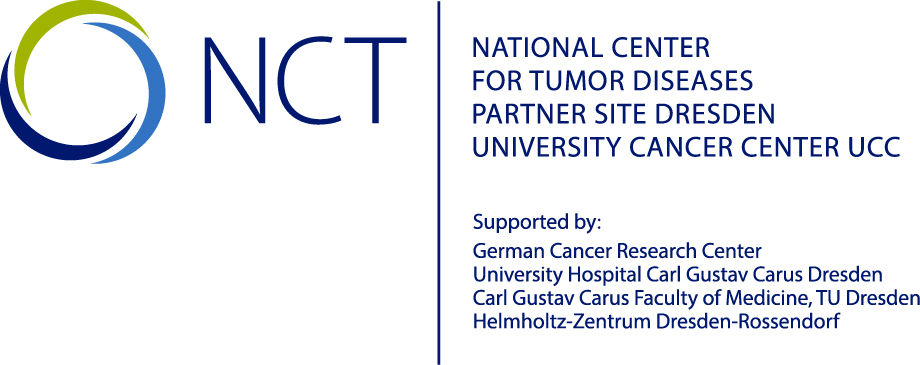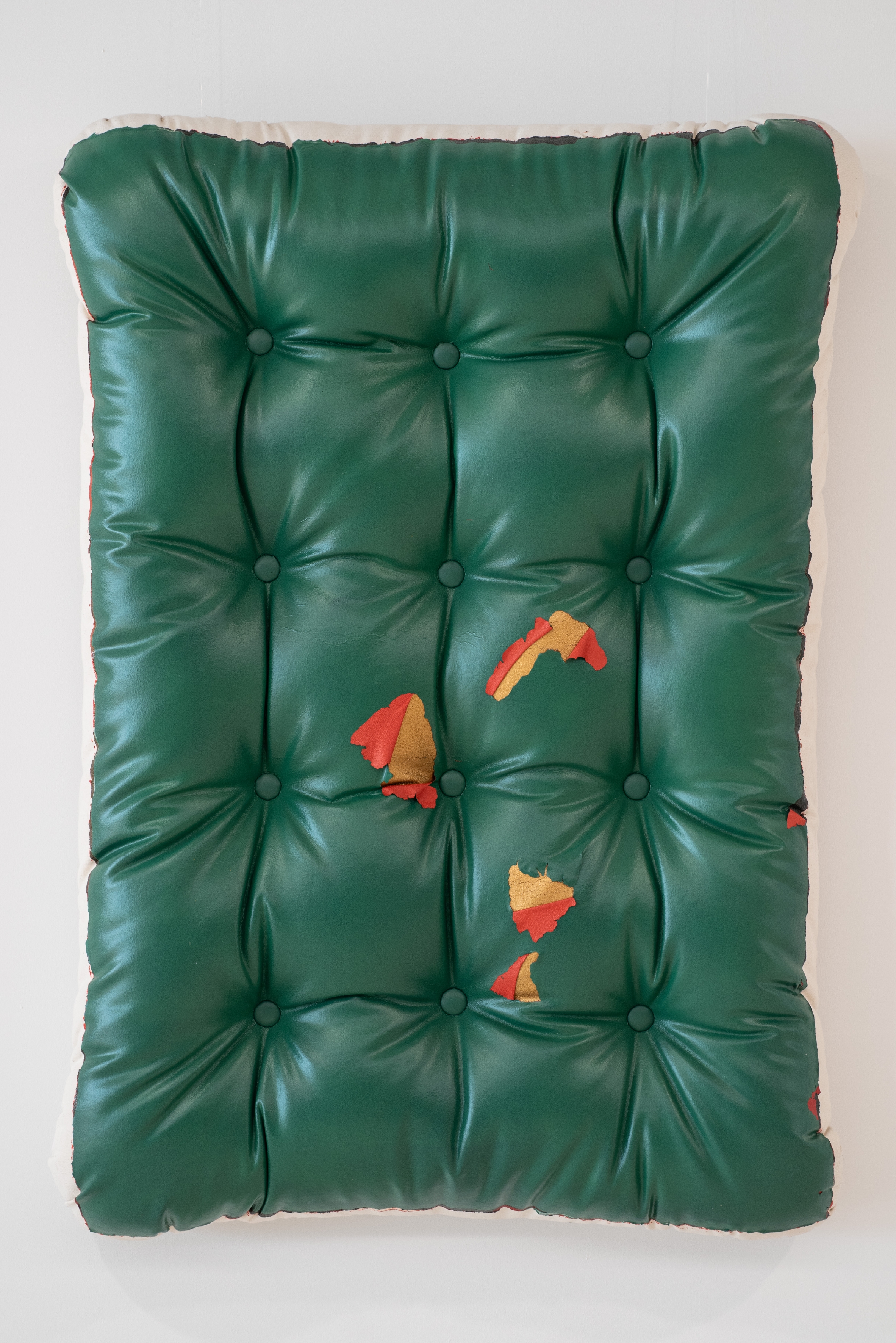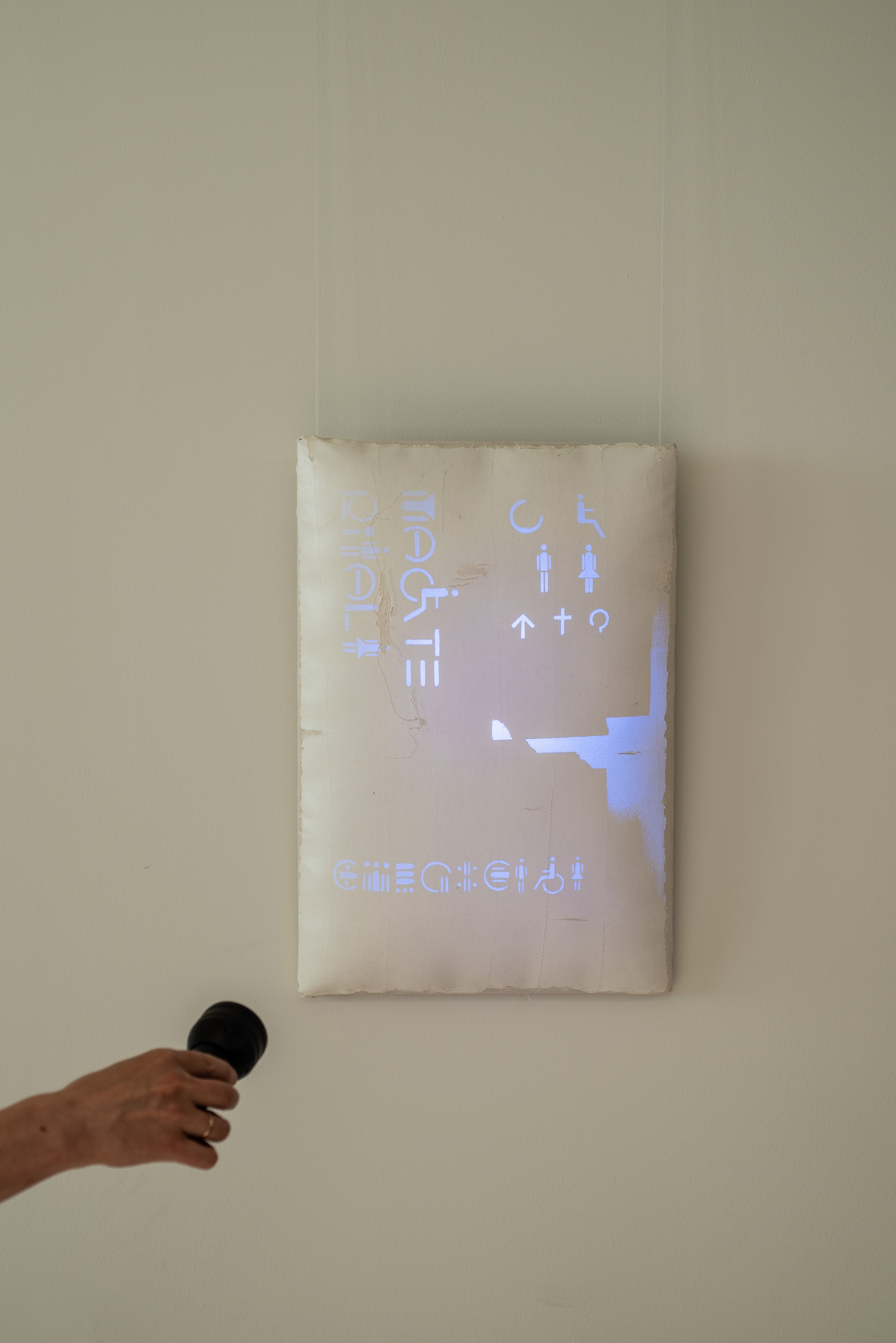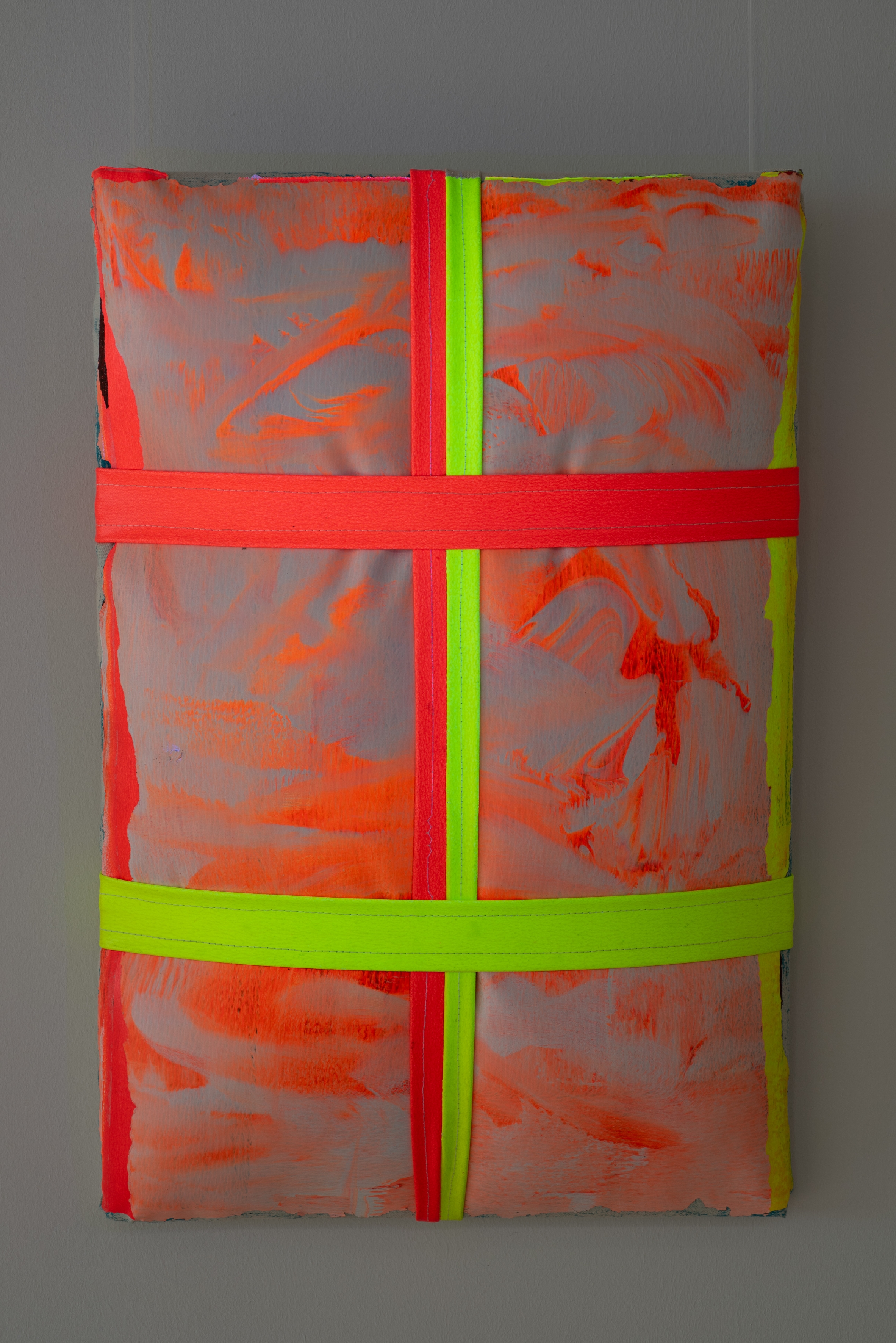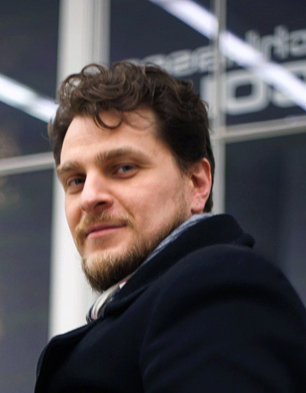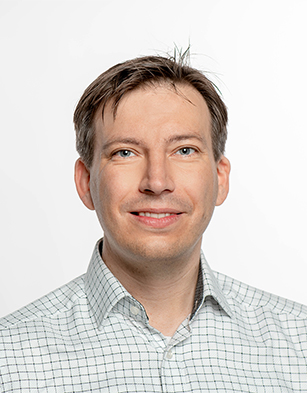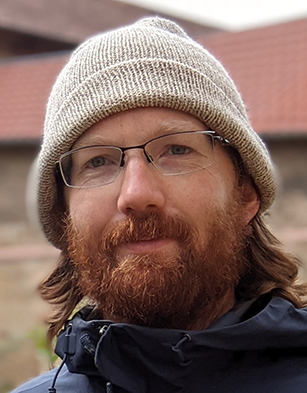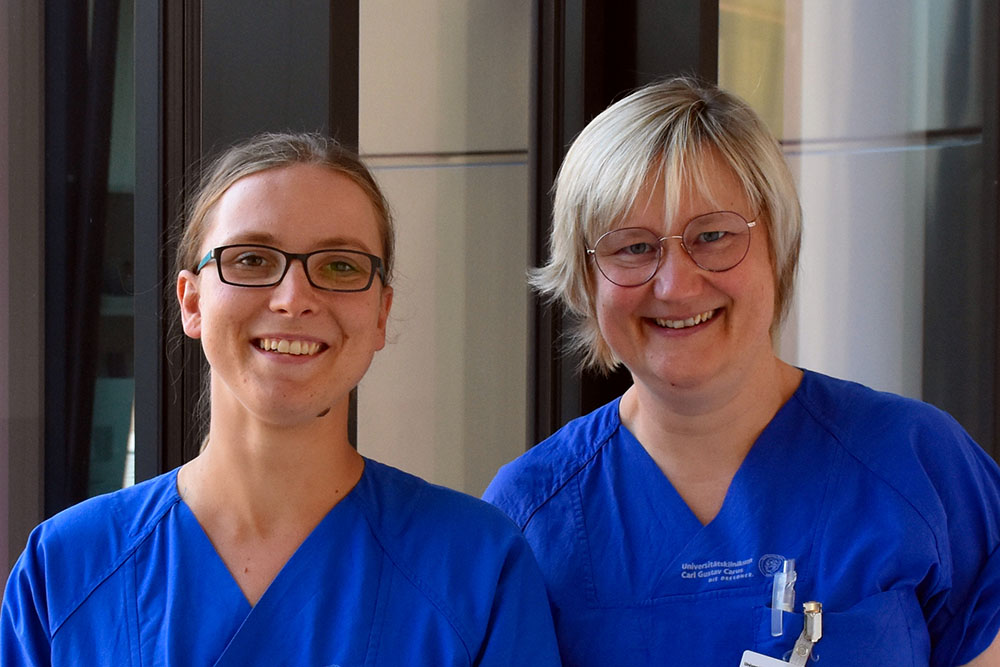This happens particularly impressively in his large-format picture object, which is presented classically like a painting on the wall, but whose spatial depth projects far into the viewer's space. The cross-genre work is reminiscent of the upholstery of a sofa set, which may have seen better days and shows signs of wear, even injuries, in various places. The disclosure of the deep green "upper skin" with its red lower frame gives us a deep look, the inner life flashes out in its soft golden materiality. The parallel between the cushion and the surface of the skin is obvious, the message unambiguous: thin-skinned is this object, vulnerable and above all no longer whole.
Another association tempts us to want to grasp this cushion haptically, to feel its tough and at the same time flexible surface, to accept the invitation of the soft bedding. It is not by chance that the idea of a "life raft" suggests itself next to the sofa cushion. Vulnerable but indestructible, it may carry you through all the ups and downs of life.
The second group of works by Eric Beier focuses on a novel imaging method for cancer surgery. Unlike the researchers, Beier does not work with short-wave infrared light, but with UV light. The diptych, two identically sized rectangles in white and orange with neon yellow belt structures, only reveals its "real" pictorial content under appropriate lighting: pictograms that make inclusion and participation visible in deconstructed ciphers. With this work, Eric Beier sensitizes us on the one hand to the often overlooked concerns of people with disabilities; on the other hand, the moment of "enlightenment" can also mean a light at the end of the tunnel.

